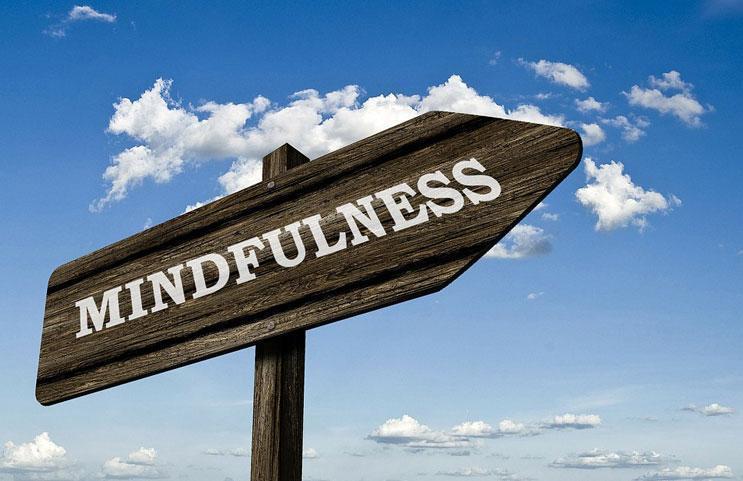Mindfulness, by definition, revolves around bringing your attention to your experiences that are happening in the present moment. You can practice mindfulness in a number of ways, yet meditation is one of the practices that yield best results, especially if done with the help of specific malas.
To start with mindfulness meditation practice, you firstly need to pick a calm spot in your home where you will sit, ideally without clutter. Light should be natural or slightly dimmed. If conditions allow you, you can practice outdoors if you prefer, but make sure to avoid crowded spots that might distract you.

Devote specific amount of time to your mindfulness practice, it will help you maintain your focus. If you are a beginner, it is best to choose a really short time, about 15-20 minutes. Set your phone timer to notify you when the time is up. Some people practice two mindful meditation sessions in a day, one in the morning and one in the evening. If you cannot devote that much time, it is perfectly fine to do it once a day or whenever you can. Even though regular practice yields best results, doing any practice is better than none. When you get more time to devote to it, you can always increase intervals and meditation length.
How to assume a proper meditation position
As a beginner, you should start by learning how to assume the proper meditation posture. It will help you relax and stabilize yourself before starting actual meditation practice.
- Take a seat, either on a meditation cushion, a chair or a bench in the park. The only important thing to remember is to have a solid, stable seat, without hanging back or perching.
- Pay attention to your legs. Notice the position they are in. If you are sitting on a chair, make certain that your heels are touching the floor. If you are sitting on the floor on a cushion, it is best to comfortably cross your legs in front of you.
- Straighten your back, yet make sure they aren’t stiff. Feel the natural curve of your spine and let your head and shoulders rest comfortably as you are sitting.
- As you sit, your upper arms should be parallel with your torso. Let your hands rest on the tops of your legs. By keeping the upper part of the arms parallel with your upper body, your hands will naturally land on just the right spot.
- Lower your chin slightly and gently direct your gaze downwards. If you feel like it, you can lower your eyelids completely, but you do not have to close your eyes whilst meditating. Simply allow whatever is in front of your eyes to be there, without your focusing on it.
- Take a moment to simply sit and feel your presence. Feel your breath and any sensations that you might have in your body.
- Bring attention to your breathing as you inhale and exhale. Feel how the air moves through your nostrils, your mouth, how it fills your lungs, how your belly rises and falls. Choose the focal point of sensation that will serve as your mental note of breathing in and out.
How to stay focused during your meditation

- At some point, your attention will wander off from your breathing. Don’t try to stop it. Take note of your mind wandering, without focusing on anything particular and gently return it to your breathing.
- You may feel the need to make physical adjustments, such as scratching an itch or moving your body. Make your movement intentional, allowing some moments to pass between what you are experiencing and how you choose to act.
- You may experience your mind constantly wandering. It is also completely normal. Avoid wrestling with your thoughts and forcing them. Simply observe them, neutrally, without reaction or focus. Be there as you sit – gently keep returning your focus to your breathing over and over, without any expectation or judgment.
- When the time is up, lift your gaze slowly (or open your eyes if they are closed). Spend a few moments listening to any sounds around you. Bring attention to how your body feels, then to your emotions and thoughts. Take a moment of pause and then decide how you are going to spend the rest of your day.

And that is the whole practice. It is very simple, yet getting used to it will take some time and effort. Once you get accustomed to it, it will feel like a second nature and the results will soon follow. Happy meditating!
Namaste,
Victoria























